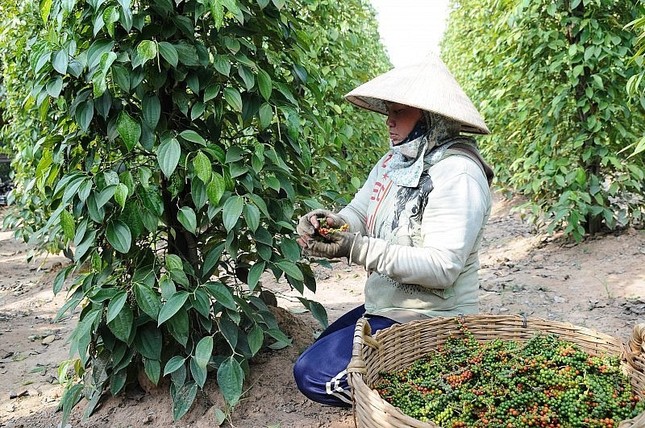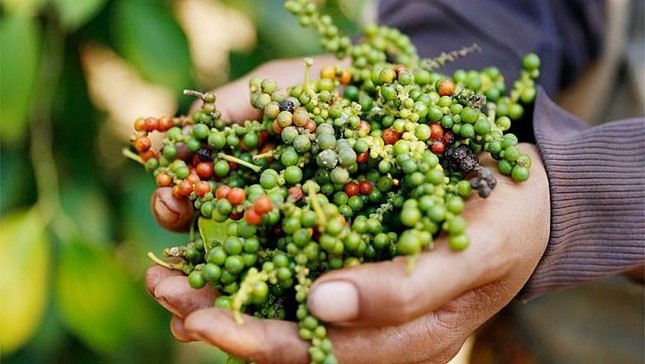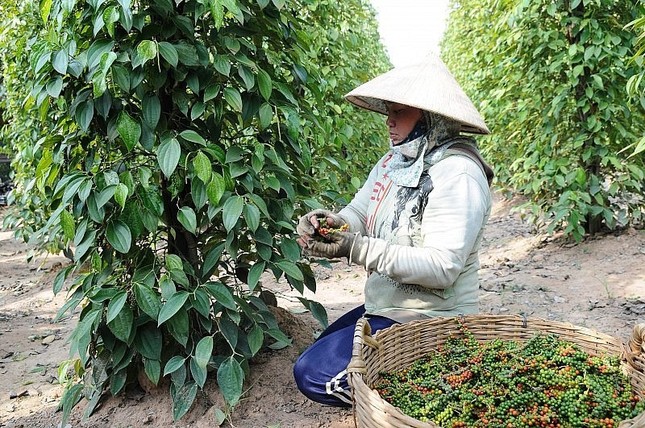Vietnam’s Pepper Imports Surge
The Vietnam Pepper and Spice Association (VPSA) reports that Vietnam imported nearly 5,700 tons of various peppers in April, totaling almost $37 million in import value. This marks a 15% increase in import volume compared to the previous month.
April’s import volume is nearly on par with the record-high import level of 5,747 tons back in May 2021.
Cumulatively, in the first four months of the year, Vietnam imported over 15,000 tons of peppers, with a total import value of $88 million. Compared to the same period in 2024, the import volume has increased by 25%, and the value has surged by 105%.
Brazil remains the primary supplier of pepper to Vietnam, contributing nearly 3,800 tons in April, accounting for 67% of the total import volume. Cambodia followed closely with 1,170 tons, marking a significant increase of 128%.

Pepper farming area has been consistently declining over the years. Illustration: IT.
VPSA attributes the significant pepper imports to the annual decline in Vietnam’s pepper production and farming area. The country’s pepper output for the 2024-2025 crop year is estimated at approximately 172,000 tons, a 2% decrease from the previous year and a 47% drop from the 322,000 tons produced in the 2018-2019 crop year.
According to statistics from the Ministry of Agriculture and Environment, Vietnam’s pepper farming area stood at roughly 110,500 hectares at the end of 2024, a substantial decrease from the peak of 151,900 hectares in 2017.
This downward trend in pepper farming is expected to persist in the coming years, mainly due to weather conditions, pest infestations, and the rising prices of alternative agricultural commodities, which encourage farmers to switch crops.
Consequently, Vietnamese businesses have had to ramp up pepper imports from other countries to sustain production and maintain their top global position in pepper production and exports, a status held for over two decades.
Enhancing the Value of Vietnam’s Pepper Industry
Vietnamese pepper is making its mark on the global export map, not just in terms of volume but also in added value.
In April, Vietnam exported 26,600 tons of various peppers, generating $184 million in export revenue.
For the first four months of the year, the country exported 74,250 tons of pepper, earning $510 million. While the export volume decreased by 11% compared to the same period last year, the export value surged by a remarkable 44%.
The average price of black pepper reached $6,749 per ton (nearly double), and white pepper fetched $8,611 per ton. This astonishing price increase has made pepper one of the agricultural commodities with the highest value growth currently.

Effective strategies have propelled the pepper industry’s global success. Illustration: IT.
Speaking to Tien Phong newspaper, a VPSA specialist attributed these impressive results to the strategies employed by many pepper producers, who have focused on importing raw materials to optimize their business operations. This approach ensures a stable supply of input materials, especially when large export orders arise, despite fluctuations in domestic production levels.
Additionally, pepper from markets like Brazil and Indonesia tends to be more affordable than domestic pepper and benefits from preferential tariffs under free trade agreements. This not only reduces procurement costs for businesses but also enables them to offer a diverse range of products that meet the stringent quality requirements of international markets.
More importantly, imports serve as a risk mitigation strategy when domestic prices surge or supply falls short. By importing, businesses can maintain stable operations and avoid disruptions to their orders.
In the context of a volatile global supply chain, the import-re-export strategy not only empowers local businesses to navigate risks effectively but also adds value to Vietnam’s pepper industry as a whole.






































